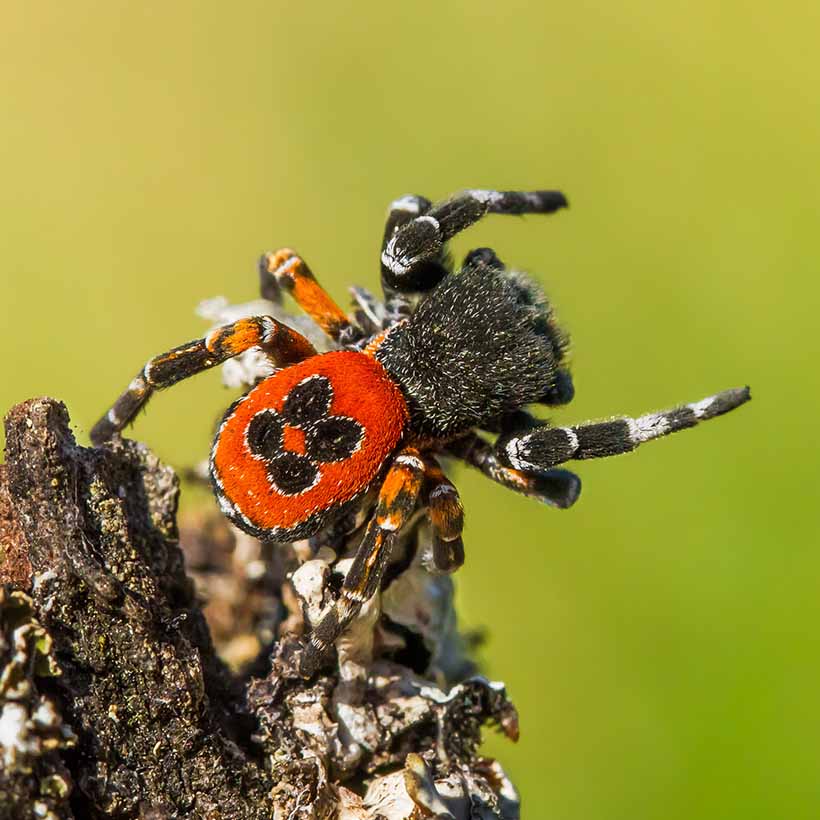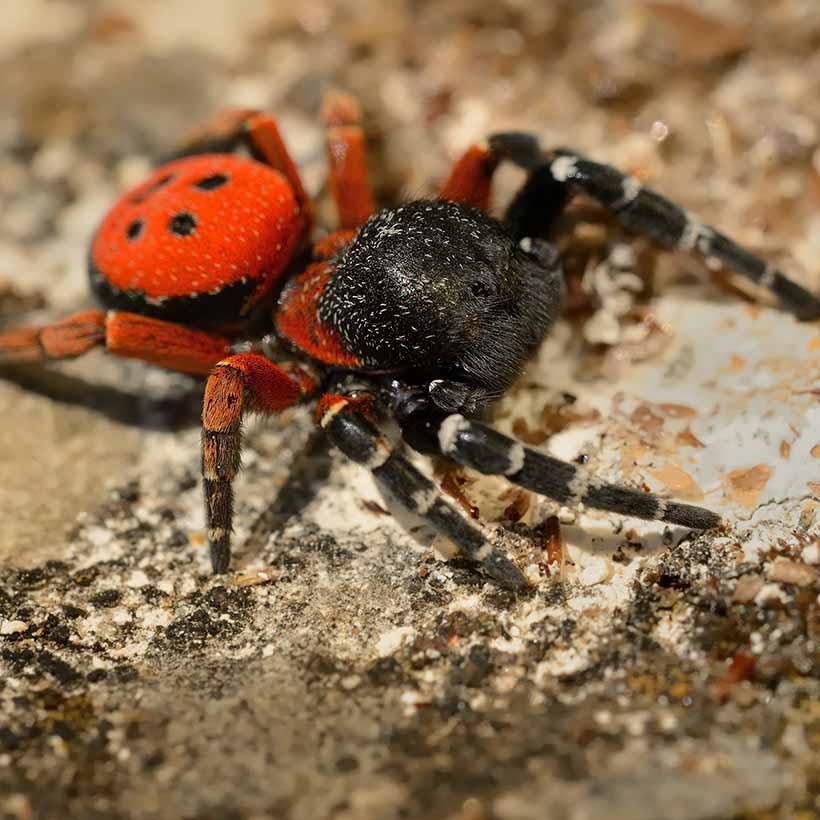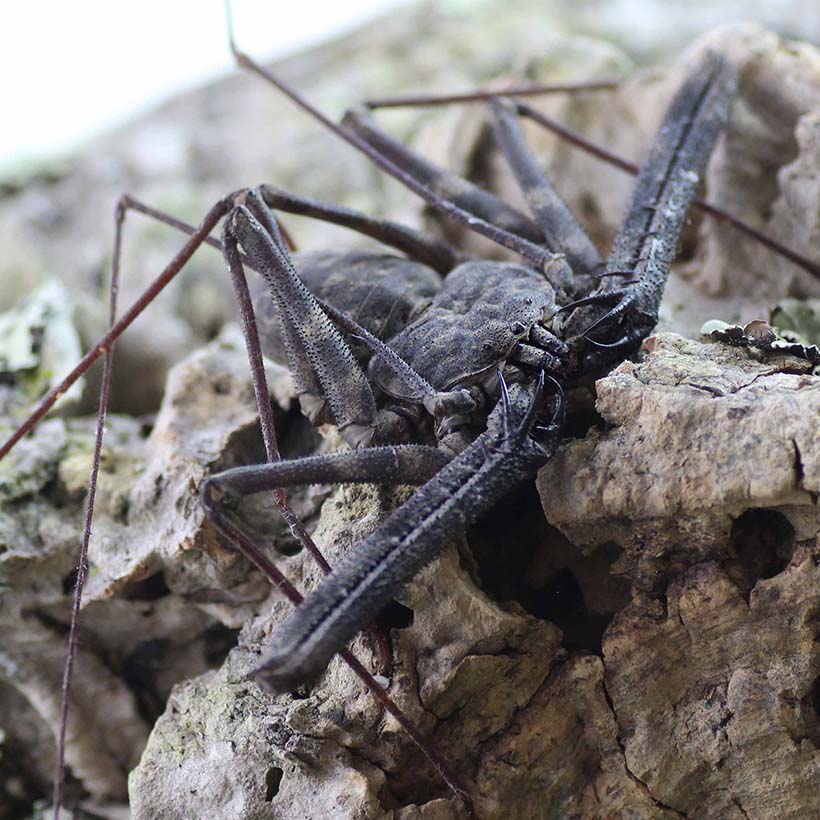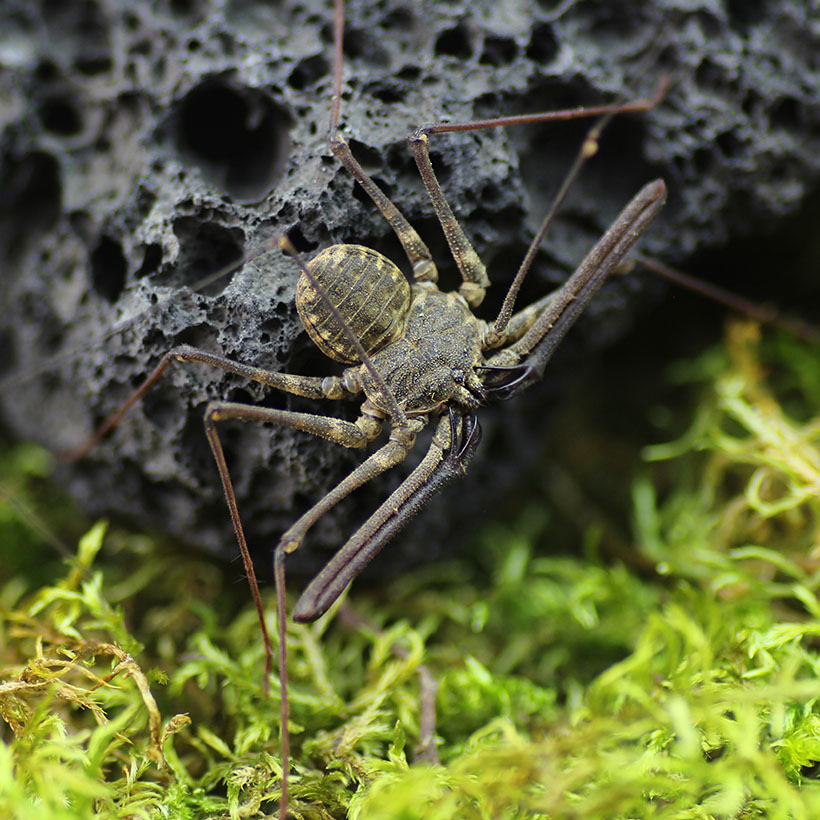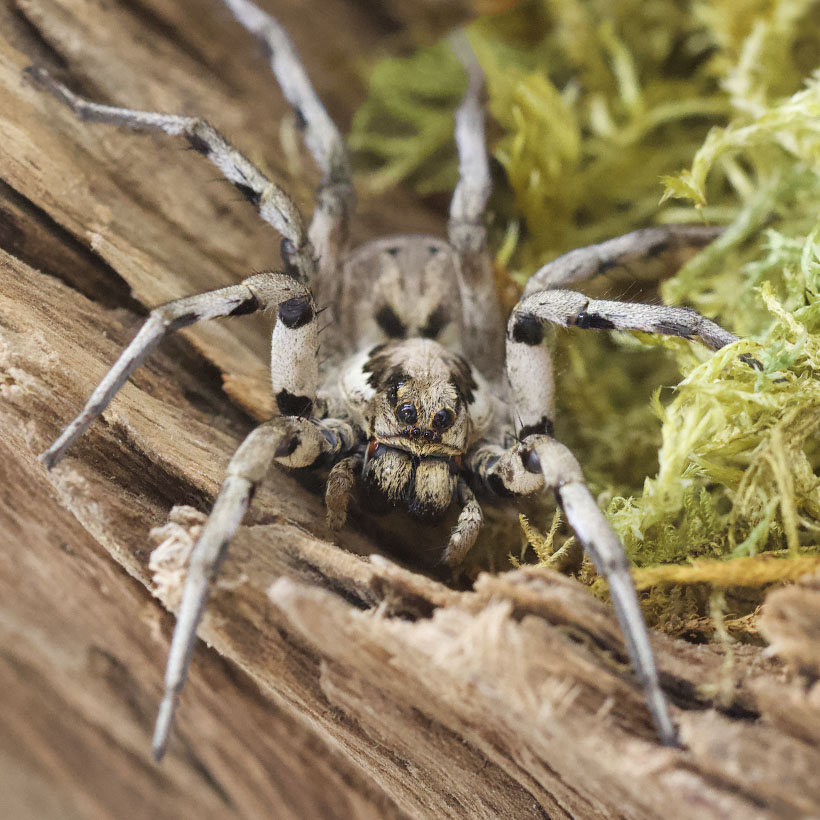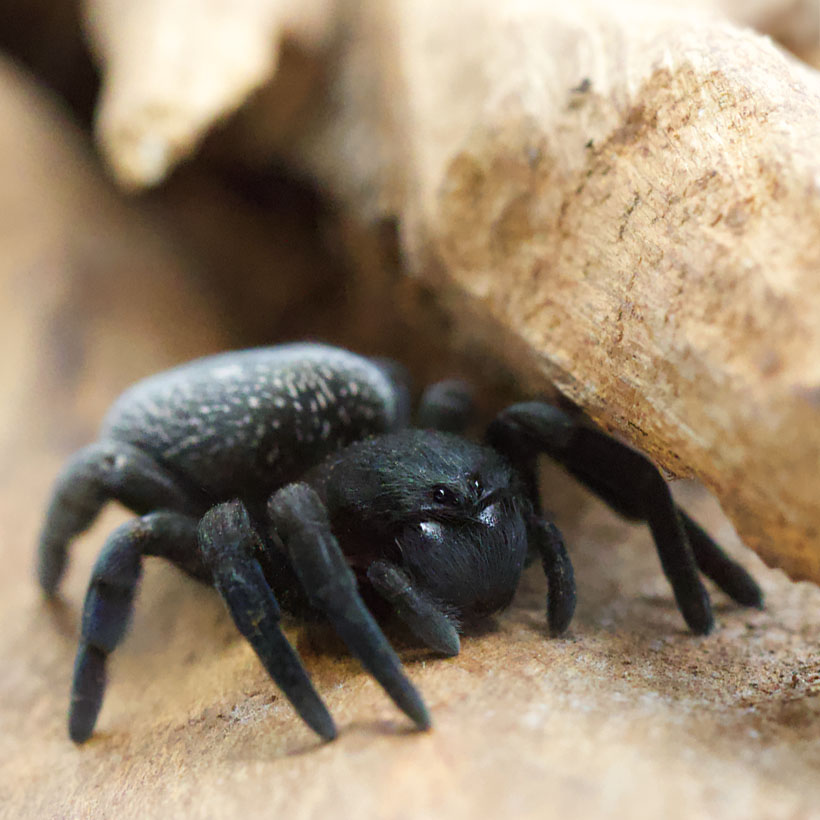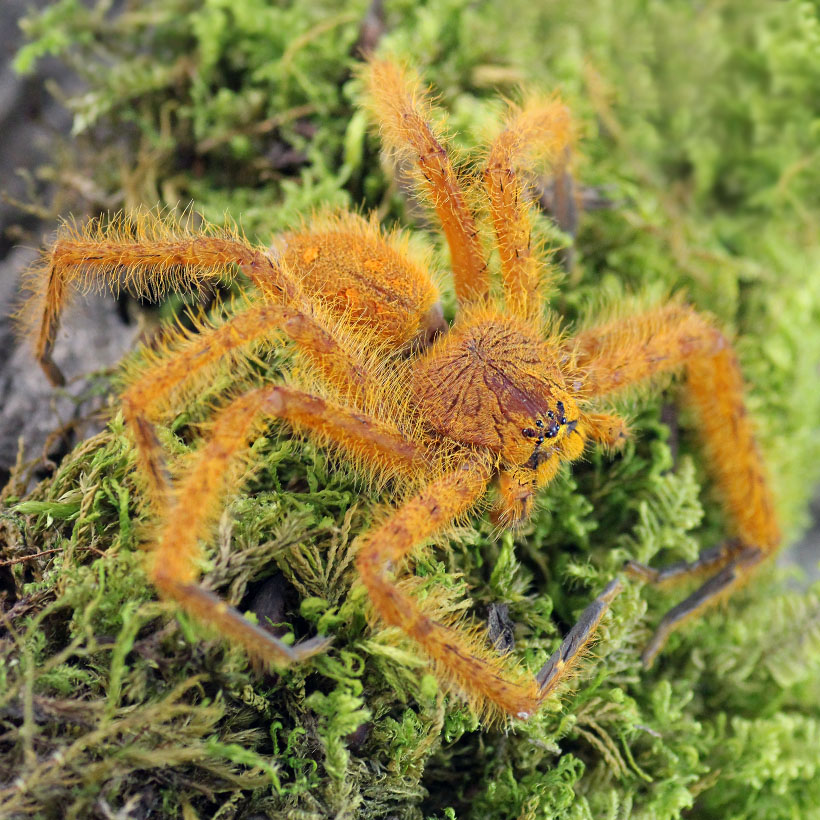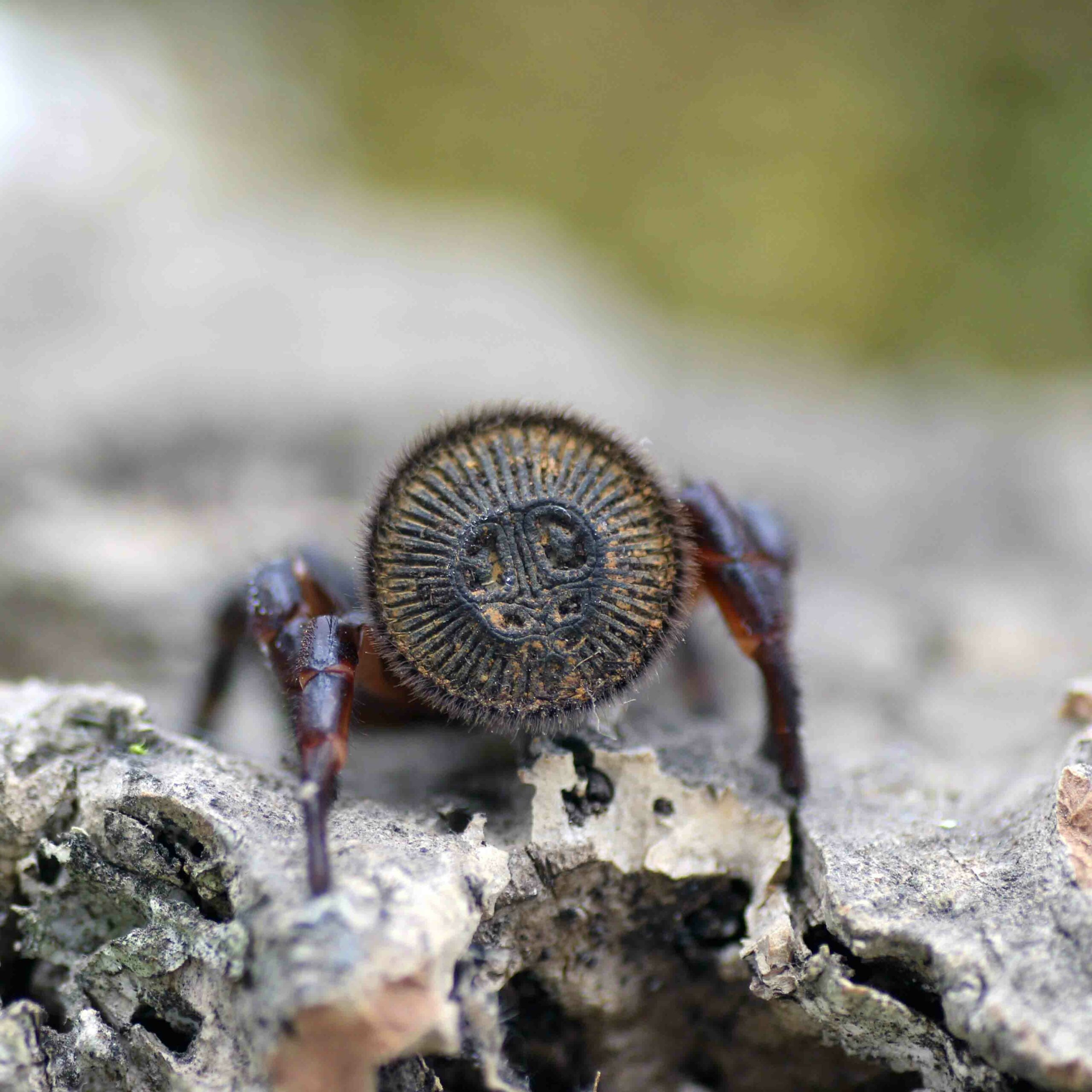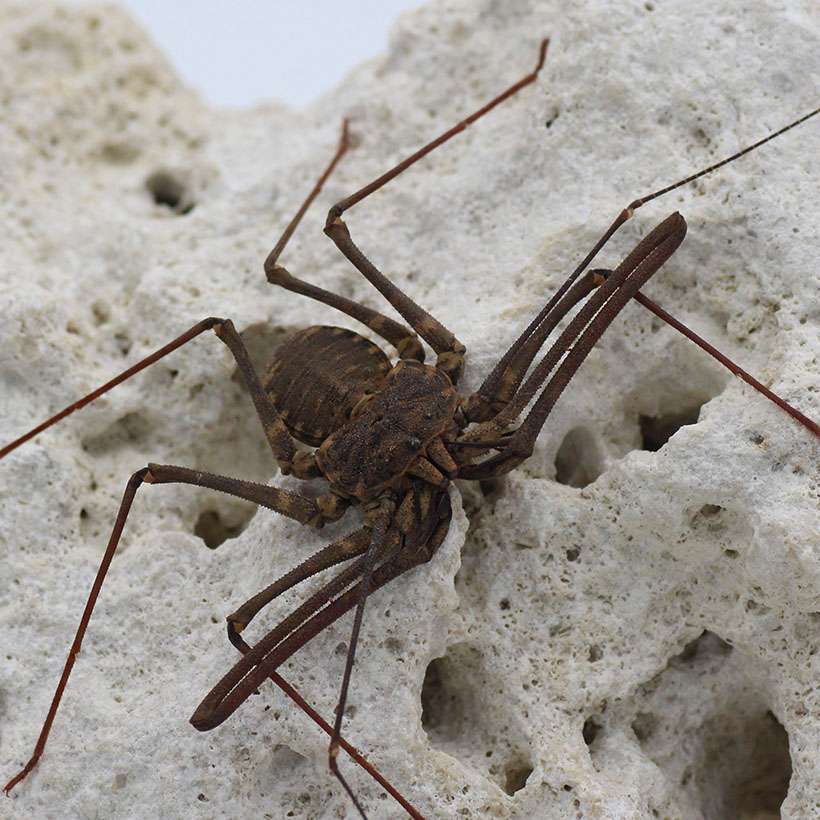Your cart is currently empty!
Danger-free and peaceful: Why Eresus walckenaeri is also interesting for beginners
The Greek tube spider, also known as Eresus walckenaeri, is an incredibly fascinating and cute animal that is gaining more and more recognition and popularity among spider keepers. It has a unique web construction and appearance that makes it a special addition to any terrarium.
The females have a rather inconspicuous black-grey base color. The males, on the other hand, are a bright orange, with only their legs and heads being black. Due to their area of origin in Greece, they require a drier and warmer habitat with a temperature of 20-28°C. The flexibility in temperatures makes the Greek tube spider an easy species for beginners and experienced keepers. Whether at a cooler 20°C or a warmer 28°C, keeping them is no problem for the animals. This allows you to concentrate fully on the design of the terrarium and feeding.
The tube spider mainly obtains its liquid requirements from its food animals. However, it is advisable to moisten the floor of their terrarium from time to time to guarantee a certain level of humidity. However, this should be done sparingly, as the tube spider prefers a rather dry habitat.
Eresus walckenaeri is a conditionally communal species that can be kept in groups as long as there is enough space and food available. However, it is recommended to separate them after a size of about 1 cm.
A special characteristic of the Greek Eresus walckenaeri is that the females often die due to matriphagy after cocoon care and the hatching of their young. Therefore, they often build only one cocoon from which many young spiders hatch. Matriphagy is a phenomenon in which the mother is eaten by her offspring after giving birth or hatching. It occurs in some species of spiders, insects and other animals and can have various reasons, such as optimization of resource use or strengthening of the offspring through the additional food.
A terrarium measuring 15 x 15 x 20 cm is sufficient for an adult animal. Cork bark and cork tubes are perfect furnishing materials for the Greek tube spider.
Drosophila hydei are suitable as food at the beginning. Later you can switch to larger animals, which should be about the same size as the spider itself. The orange tube spider eats such a food animal about once a week, but stops eating a few days before and after a moult.
Current size:
Food: Drosophila hydei
Housing: Animals are sent in perforated rearing boxes
